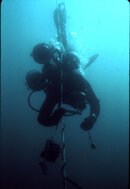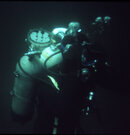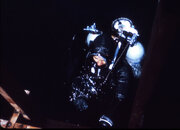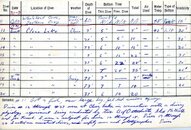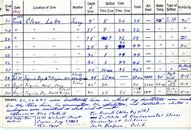johndiver999
Contributor
There are still some freedive suits which are made with no fabric on the inside or out. Eliminating the external fabric is very benefical if you wear the suit on a cool day, say on the boat. The naked rubber dries extremely fast, so evaporative cooling is no longer an issue.
They are also very comfortable due to the enhanced flexibility associated with elimination of a fabric layer.
These suits are fragile however. They have poor resistance to abrasion and increased tendency to tear. Also, they are very vulnerable to uv light degradation, the back of the shoulders will start to crack and break down after a season or two of use in the sun. Not that practical for freedive hunters who crawl on the bottom.
As a further FYI, the smooth rubber of the inside of a freedive hood will cause an external ear squeeze if not addressed. For me, every time I enter the water, I have to break the face seal and allow a little bit of water into the hood. Some people burn a pin hole in the hood to intersect the ear canal, so they can skip this step. I pretty much never have this issue with a fabric lined hood.
They are also very comfortable due to the enhanced flexibility associated with elimination of a fabric layer.
These suits are fragile however. They have poor resistance to abrasion and increased tendency to tear. Also, they are very vulnerable to uv light degradation, the back of the shoulders will start to crack and break down after a season or two of use in the sun. Not that practical for freedive hunters who crawl on the bottom.
As a further FYI, the smooth rubber of the inside of a freedive hood will cause an external ear squeeze if not addressed. For me, every time I enter the water, I have to break the face seal and allow a little bit of water into the hood. Some people burn a pin hole in the hood to intersect the ear canal, so they can skip this step. I pretty much never have this issue with a fabric lined hood.



